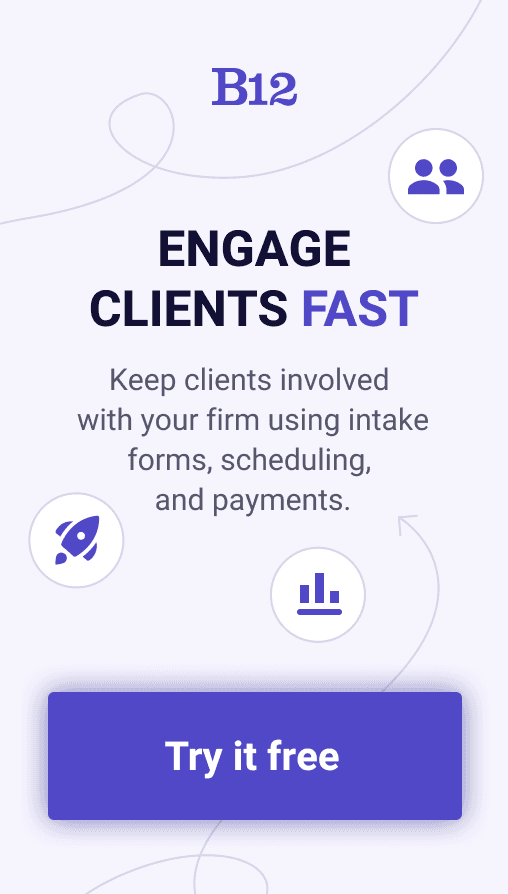Build an AI website in 60 seconds
AI generates your personalized website instantly with built-in scheduling, payments, email marketing, and more.
Start for free
CTR vs. CTOR: Understanding email metrics

Email marketing is a crucial tool for businesses to get in touch with their audience. The metrics associated with email campaigns are crucial to measuring their success and impact. Two such metrics that play a significant role in measuring email performance are CTR and CTOR. CTR, or click-through rate, measures how many recipients click on a link within an email, while CTOR, or click-to-open rate, measures how many recipients click after they open the email. Metrics like these help you know how well your emails are resonating with your audience and how to optimize your strategy.
Understanding and analyzing CTR and CTOR metrics is essential for email marketers striving to improve engagement and conversion rates. Businesses can better understand the effectiveness of their email campaigns by tracking these metrics. The purpose of this blog post is to explain the difference between CTR and CTOR, their importance in email marketing, and how they can affect decision-making. Then you'll be able to evaluate your current email campaigns, identify areas for improvement, and make data-driven decisions to improve your overall marketing strategy. Let's journey into the world of email metrics and uncover the true significance of CTR vs. CTOR in email marketing.
Understanding CTR: key factors and importance
CTR, or click-through rate, is an essential email metric that measures the percentage of recipients who click on a particular link within an email campaign. It is calculated by dividing the number of clicks by the number of delivered emails and multiplying the result by 100. Understanding CTR is crucial for email marketers as it provides valuable insights into the effectiveness of their campaigns and helps them gauge customer engagement.
Several key factors contribute to the CTR of an email campaign. Firstly, the placement and design of the call-to-action (CTA) buttons or links play a significant role in encouraging recipients to click. A well-positioned and visually appealing CTA can entice recipients to take the desired action. Secondly, the relevance and personalization of the content play a crucial role in engaging subscribers and motivating them to click through. Tailoring the email content to match the recipient's interests and preferences can significantly increase CTR. Lastly, the subject line and preheader text should be compelling and enticing, creating a sense of urgency or curiosity that prompts recipients to open and click on the email.
By analyzing CTR metrics, email marketers gain insights into the performance of their campaigns. It helps them identify which email content, subject lines, or CTAs are resonating well with their audience. Moreover, it enables them to pinpoint any areas of improvement or optimization in their email strategy. A high CTR indicates that the email campaign successfully captured the recipients' attention and motivated them to take action. On the other hand, a low CTR suggests that certain aspects of the campaign need adjustment to better engage the audience and drive conversions. Overall, understanding and monitoring CTR is vital for achieving email marketing success and maximizing the return on investment.
Understanding CTOR
The click-to-open rate is a crucial email metric that measures the effectiveness of your email content and design in engaging recipients. Unlike the click-through rate, which calculates the percentage of recipients who clicked on a link in the email compared to the total number of recipients, CTOR focuses on the ratio of unique clicks to unique opens. In other words, CTOR provides insights into the performance of your email once it has been opened.
Calculating the CTOR involves dividing the number of unique clicks by the number of unique opens, and then multiplying the result by 100 to obtain a percentage. This metric helps you gauge the success of your email in persuading subscribers to take action after opening it, as it measures the click engagement specifically among those who were interested enough to open the email. By examining the CTOR, you can gain a deeper understanding of how well your email content resonates with your audience, helping you refine your email marketing strategy to drive higher engagement and conversions.
CTR vs. CTOR: Key differences
When it comes to measuring the success of your email marketing campaigns, understanding the key differences between CTR and CTOR is crucial. While CTR focuses on the number of clicks concerning the number of emails sent, CTOR provides insights into the engagement and effectiveness of your email content by measuring the number of clicks in relation to the number of opens.
CTR, as a widely used metric, helps you evaluate the performance of your email campaigns in terms of generating interest and engagement. It measures the percentage of recipients who clicked on a link within an email, regardless of whether they actually opened the email or not. On the other hand, CTOR goes a step further and gives you a deeper understanding of how well your email content resonates with your subscribers. By calculating the percentage of unique clicks in relation to the number of unique opens, CTOR provides a more accurate measure of the effectiveness of your email content in driving action.
Understanding the differences between CTR and CTOR is essential for making informed decisions in your email marketing strategy. While CTR helps you gauge the overall click performance of your campaigns, CTOR allows you to assess the engagement and relevance of your email content. By analyzing and comparing both metrics, you can gain valuable insights into the effectiveness of your email campaigns, optimize your content, and improve your overall email marketing success.
Both CTR and CTOR are crucial email metrics that provide different perspectives on the performance of your email campaigns. By analyzing these metrics, you can gain a better understanding of how your emails are performing and make informed decisions to optimize your email marketing strategy.
Making informed decisions based on CTR vs. CTOR metrics
When it comes to email marketing, understanding and analyzing metrics is crucial for success. Both the click-through rate and click-to-open rate provide valuable insights into the effectiveness of your email campaigns. However, it is important to make informed decisions based on these metrics to optimize your email marketing strategy.
By comparing CTR and CTOR, you can gain a deeper understanding of how your audience is engaging with your emails. CTR measures the number of recipients who clicked on a link in your email, while CTOR focuses on the ratio of clicks to email opens. While CTR indicates the overall interest in your email content, CTOR gives you a clearer picture of how engaging your content is to those who actually opened your email.
By analyzing both metrics together, you can identify areas for improvement in your email marketing campaigns. For example, a low CTR but a high CTOR might suggest that your subject lines and preview text are effective in driving open rates, but the content within your emails is not compelling enough to encourage clicks. On the other hand, a high CTR but a low CTOR could indicate that your email content is engaging, but your subject lines or preview text may need improvement to increase open rates.
Understanding the differences between CTR and CTOR is vital for optimizing your email marketing strategy. By closely analyzing and comparing these metrics, you can gain insights into what areas of your campaigns need improvement and make informed decisions to drive higher engagement and ultimately, better results.
Improve your email engagement with B12
It’s possible to achieve great CTR and CTOR scores with excellent email engagement. And B12 is here to help. With B12, you get access to email marketing and automation capabilities that can streamline your email tasks. Our tool makes it easy to send high-quality professional emails customized to include all your branding elements. Send automated emails and set up automated workflows for more convenience.
No-code AI helps you generate compelling email headlines and outreach emails that can help improve click-throughs. AI Assist gives you the perfect copy to include in your email content for better engagement. Get started for free today to start winning, attracting, and serving clients via email.
Attract, win, and serve more clients
Receive helpful resources directly to your inbox to help you succeed online.
Draft your site in 60 seconds
Get an AI website made specifically for you that's free to launch.
Start for free ✨No credit card required
Spend less time on your website and more time growing your business
Let B12 set up your professional online presence with everything you need to attract, win, and serve clients.




